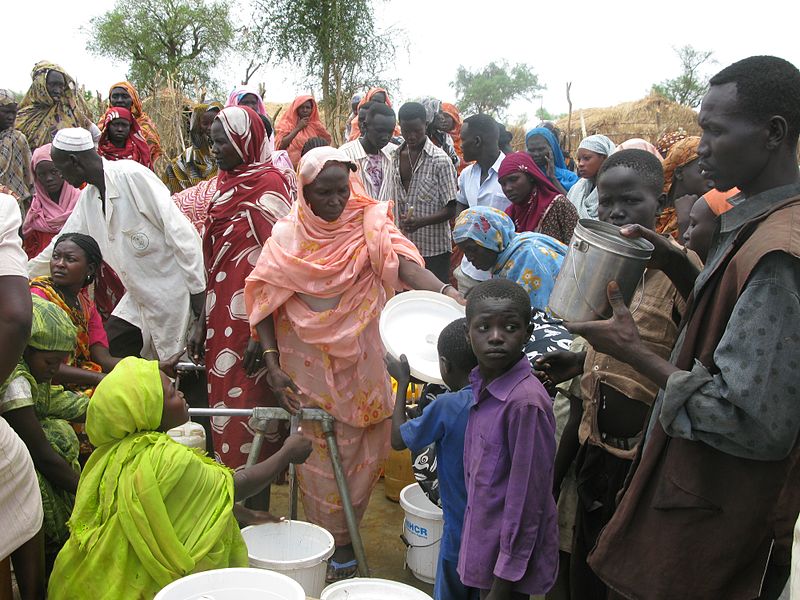The Truth About HIV/AIDS in South Sudan

The Republic of South Sudan is located in Eastern Africa. Many know it for its newly-gained independence from Sudan and its status of being the youngest nation in the world. However, South Sudan is also one of the poorest nations in the world and is listed as 185 out of 189 countries on the Human Development Index (HDI). Due to ongoing conflict in the region, such as the recent civil wars, South Sudan has seen a spike in issues related to the country’s health system and many of its citizens are impacted by HIV/AIDS. Nevertheless, international and domestic institutions are taking major steps in combating the prevalence of HIV/AIDS in the region.
The Reality of HIV/Aids in South Sudan
One can characterize the issue of HIV/AIDS in South Sudan as being more concentrated in certain social groups and geographical areas. For example, HIV and AIDS are more prevalent in the southern regions of the nation and even more prevalent among female sex workers within those regions.
The transmission of HIV is a topic that is studied at length to combat the spread of the virus. According to the South Sudan Mode of Transmission Report (MoT), a study that occurred in 2014 regarding forms of transmitting HIV, the majority of the newest cases came from heterosexual sexual relations and mothers transmitting to their newborn children. Mother-to-child transmission often happened in cases of birthing, breastfeeding and pregnancy.
Another statistic that researchers often analyze when discerning the severity of the issue within a certain region is the percentage of the general population that has the virus. The U.N. Progress Report for monitoring HIV/AIDS in South Sudan states that around 2.5% of adults (ages 15-49) are living with HIV. This number, however, is improving due to help from institutions such as the Ministry of Health (MoH) and the U.N. These institutions are working on new ways of preventing the spread of HIV and treating those who have already been affected.
Something else that institutions take into consideration when attempting to combat viruses such as HIV is the general public’s knowledge of that virus. According to a survey on the attitudes and knowledge of HIV in Nimule, most adolescents had “fair” knowledge of HIV with 82% of the surveyed youth being aware that HIV can spread through sexual intercourse and 98% being aware that it can spread through blood. While the researchers concluded that there were some misconceptions surrounding the virus, it is commendable that most adolescents in the survey had a basic knowledge of the subject.
How Institutions are Battling HIV/AIDS in the Region
According to an article that the U.N. published, the prevalence of HIV/AIDS in South Sudan – and Africa as a whole – is declining rather quickly. This is due to international institutions such as UNAIDS and the governments of Africa funneling money into their health programs. However, this article also stresses the need for continued monetary support to help these countries become healthier and safer.
One way that UNAIDS and African governments are helping combat this virus is through HIV testing. According to the MoH, there were around 32 facilities in South Sudan that provided HIV-related assistance, like testing. The South Sudanese government has also made it its mission to “Test and Treat all.” These testing efforts have made it a lot easier for institutions to pinpoint certain concentrations of affected individuals and allocate their resources accordingly. These measures to “test all” have been successful. The total number of people receiving antiretroviral treatment increased by around 20,300 between March 2013 and March 2018.
Another way in which institutions are helping the cause is by amping up anti-retroviral therapy (ART). This is an HIV treatment that helps to contain HIV replication. This therapy greatly reduces the mortality rate of HIV and even allows some patients to live completely normal lives. The “test all treat all” initiative has certain guidelines, one of which includes a minimum amount of time one can wait to receive treatment after testing positive for HIV (one week). Guidelines like these make it easier for governments and other institutions to manage the spread and treatment of the virus.
The Road Ahead
Although HIV/AIDS in South Sudan continues to be an issue, it is critical to note that governments and organizations are working to combat it. With the help of both international and domestic institutions, the cases of HIV continue to decrease year after year. However, it is still crucial to take into account that the issue has not reached its end, and continued support for South Sudan is of utmost importance.
– Tim Ginter
Photo: Wikipedia Commons
